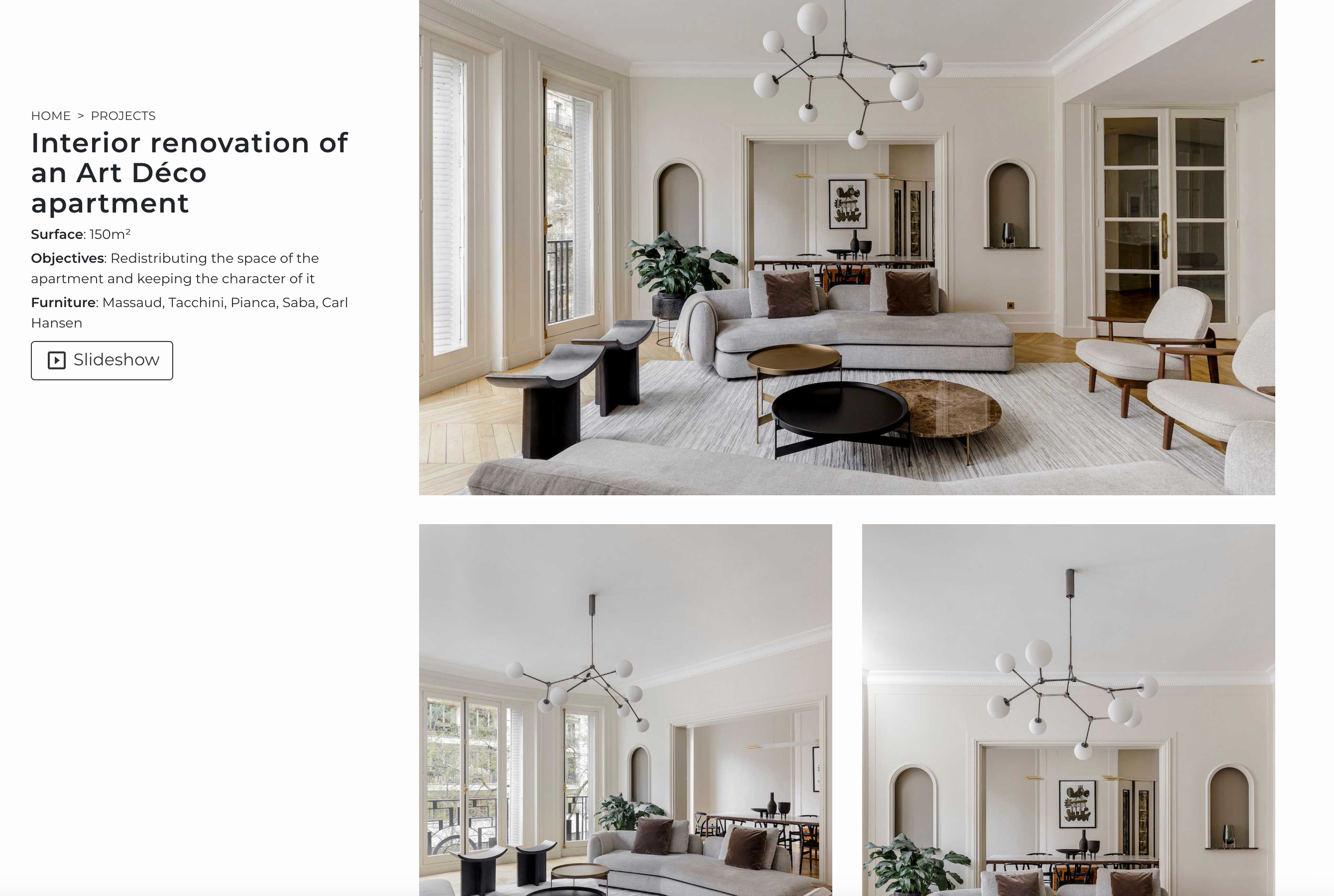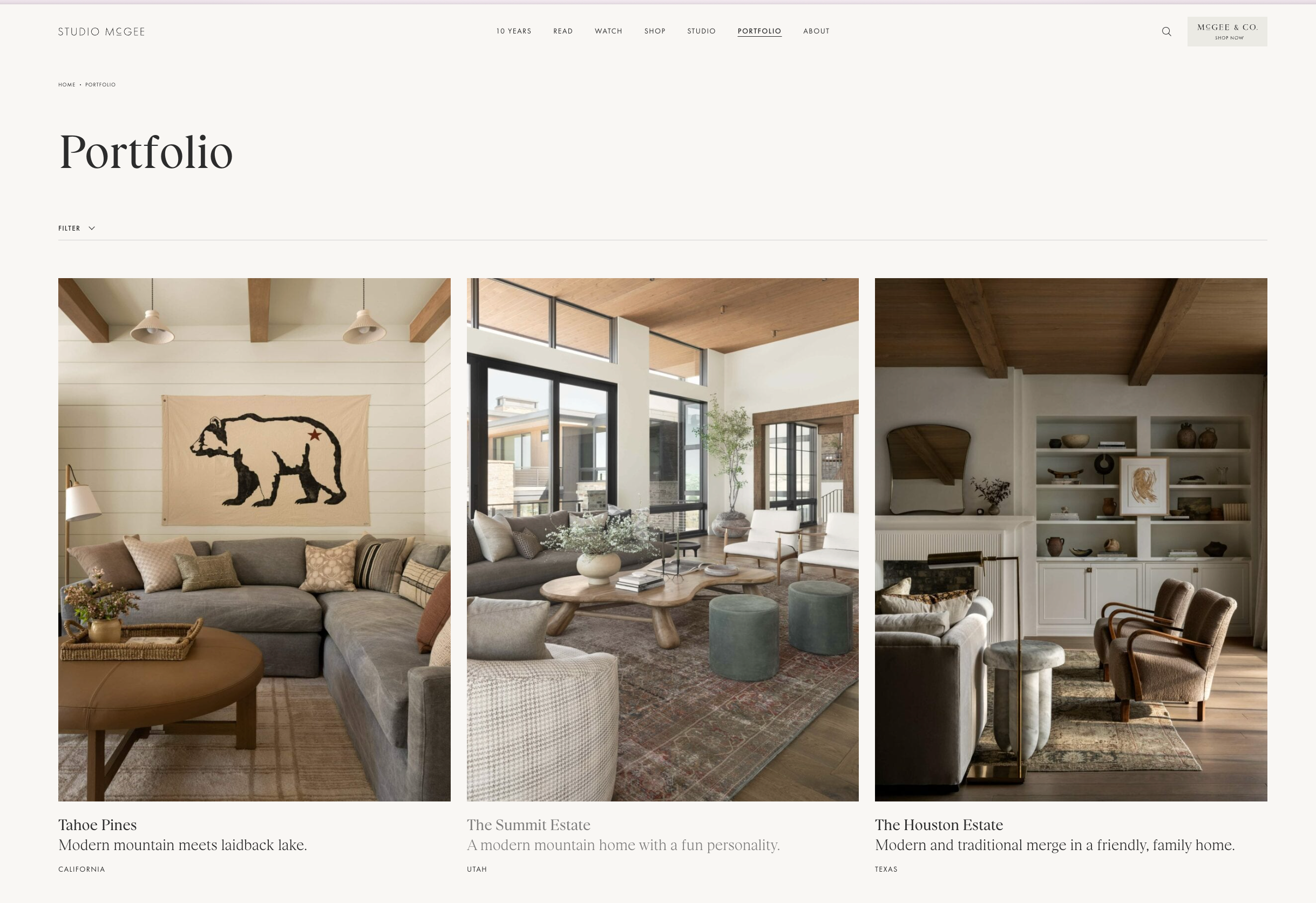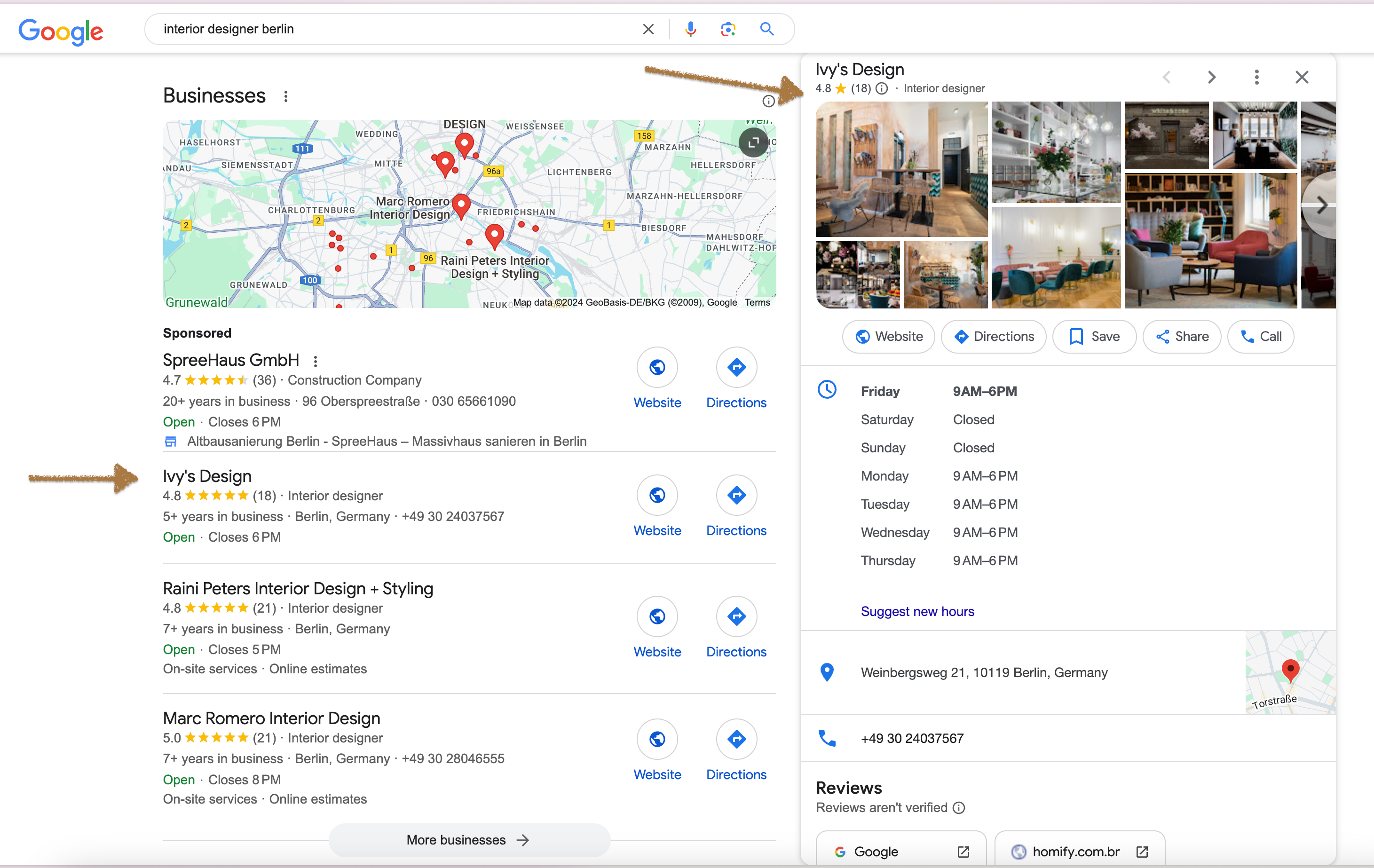How to get new Clients as an Interior Designer - A Complete Guide
Getting new clients as an interior designer can be hard. But if you're starting your studio or want to scale it, finding clients should be a key part of your job. In this guide, we propose a step-by-step approach to set strong foundations, find your first clients, and finally scale your studio.

As an Interior Designer, creating beautiful spaces is your passion—but running your own studio or freelancing means finding clients is just as important. Unfortunately, this crucial skill is often left out of design schools.
At Rayon.design, we work daily with interior designers, many of whom are running their studios, and we understand how challenging it can be to find clients, especially when starting.
With a solid marketing routine and the right foundation, you can secure a steady flow of clients—without the constant stress of project-based income. That’s why we have created this guide to help you grow your client base efficiently.
👉 Who is this guide for?
This guide is designed for Interior Designers who have just launched their own business or plan to do so. If you run an already existing studio for a few months or years, that’s also a useful resource if you are looking to expand your activity and attract more clients.
👉 What’s covered in this guide?
We have gathered insights from marketing experts and successful Interior Designers to provide a step-by-step guide to finding clients.
From setting up your offer & marketing basics to finding your first clients, and finally starting scaling your studio, this guide is a step-by-step approach to maximize your chances of building a successful Interior Design studio.
With that being said, let’s jump directly into the concrete things ⬇️
Table of Contents
- Setting up the Basics: Positioning, Services, Website & Portfolio
- Finding Your First 5 Clients: Do things that don’t scale
- Scaling Your Studio: Create a Marketing Engine
1# Setting up the Basics: Positioning, Services, Website & Portfolio
Starting with strong foundations is the best way to avoid errors in the future and put all the chances to become successful on your side.
While setting the basics is often underlooked, focusing on three key pillars from the start will help avoid costly mistakes and ensure your business is ready to grow:
- Positioning: Clearly define your niche and what makes you stand out.
- Website: Build a website that not only looks good but also converts visitors into clients.
- Portfolio: Showcase your work in a professional way that attracts the right clients.
Build a clear positioning and services offer
One common mistake Interior Designers make when launching their studio is being too broad in their positioning. It’s tempting to say “I can do everything”. But niching down is the best decision you can take, especially when getting started.
Speaking to everyone is speaking to no one. Start by being 100% clear on what you offer and why you are the best at it:
- Project type: Do you focus on residential, commercial, or public spaces?
- Design style: Are you an expert in minimalism, industrial, or Scandinavian design? Make sure this is clear on your website and marketing materials.
- Background: Do you have a specific experience or a unique perspective that supports your positioning? For example, a firm where you worked before, or a city where you lived with a particular type of architecture?
This level of clarity makes you more attractive to the clients you want to work with, as opposed to appearing generic.
The same mantra needs to be adopted when it comes to your Interior Design Services Offer:
- Be clear about what you do and DON’T do.
- Set clear expectations about the deliverable.
That’s also a way to productize your offer, by being focused on a few things rather than being everywhere.
Create a website that converts
Once you have nailed down your positioning, it’s time to build your online presence. And that starts with a beautifully designed website that will act as a conversion machine.
Your website will often be the first point of contact for potential clients. Basically, it will serve two purposes:
1) Getting discovered:
Putting yourself in the shoes of a potential client, it’s important to have your website ranking on what your clients will search for.
That’s why aiming to rank for regular searches like “Interior Designer / Interior Design studio in "CITY” is important. Adding those keywords to your website will help you be discoverable.
2) Convert visitors into clients:
Your website is also where potential clients get to know you and your work. The goal is to showcase your expertise in a way that makes visitors want to work with you. Include the following key sections:
- Projects: What have you done before? Feature high-quality images of past projects. Before-and-after images are particularly effective if you specialize in renovation.
- Services: What you concretely do? Not all interior design studios do the exact same thing.
- About: Share your story and who’s behind the studio.
- Testimonials: Add credibility thanks to previous clients.
What if you are just getting started and you don’t have projects/testimonials?
If you are new, consider using portfolio work from school or design competitions as placeholders until you have client projects.
👉 Example: Createur d’Interieurs, a Parisian design studio, has built a beautiful website where we can directly understand what they do, and see the projects they’ve worked on. They’re also ranking in the top positions when typing “Interior Design Studio Paris”, making them highly visible to potential new clients.


⚙️ Tools to consider for an Interior Design website:
Our advice is to choose a website builder like Wordpress, Squarespace or Framer.
They feature a lot of pre-made templates that you can fill with content and intuitive drag-and-drop interfaces.
This is the best solution to build a website by yourself, without having to hire a developer or agency. Depending on the provider and plan chosen, you will generally pay between 15$ to 50$/month to have a website.
Make sure to have a CMS (content management system) making you able to modify content easily on your website, publish blog articles, add new projects photos, and so on. Your website is a living asset, so it’s important for you to be able to modify it.
🎨 Build a beautiful Portfolio showcasing your services
Your portfolio is one of the most important tools for attracting new clients. It’s more than just a collection of photos; it’s a showcase of your best work and the results you deliver for clients.
What should be included in your portfolio?
- High-quality images: Invest in professional photography. Beautiful, clear images make all the difference in how your work is perceived. Even if you are just starting out, find a way to get professional photos of your best projects.
- Before and after shots: Especially if you specialize in renovations, showing the transformation process is compelling and shows the impact of your work.
- Case studies: Rather than just showing images, provide context for each project. Explain what the client wanted, what challenges you faced, and how you solved them. These project descriptions show potential clients that you are not just designing spaces that look nice, but that you are solving real problems.
👉 Example: Studio McGee, a studio known for its bright, sophisticated designs, has a portfolio which is presented in a clean, navigable format, and each project is accompanied by detailed case studies. You can explore their work and get a sense of their distinctive style right from their website. Check it out here.

⚙️ Tools to showcase your Portfolio:
- Behance: A platform where designers of all kinds (including interior designers) can create and display their portfolios.
- Issuu: If you want to create a downloadable or shareable PDF of your portfolio, this tool is very useful.
- Your website: The website tools we have sawn before (Squarespace, Framer, Wordpress) enable you to create carrousel-like sections that are perfect for a portfolio.
2# Finding your first 5 clients - Do things that don’t scale
Once you have built your foundation, it’s time to start finding clients. They will not come magically. The first step is doing things that don’t scale. These tactics might not be sustainable long-term, but they are the fastest way to get your first few clients.
Start with your personal & professional network
Your network is a goldmine when you start a new Interior Design studio. Especially because that’s a highly demanded service, that can benefit a lot of people.
So when getting started, go pitch:
- Your family
- Your friends
- Your former colleagues or classmates
Either by making a phone call, during a family dinner, or by sending an email. As those people know you, and potentially know your value, they will be more entitled to give you a referral than a stranger. And sometimes, one of the people you contact can even have a project for him.
Capitalize on your first clients
Once you have completed your first few projects, focus on turning your clients into referral sources. The best way to do this is by delivering exceptional work and then asking for testimonials or referrals. These clients trust you with their spaces, and if you deliver quality, they’ll be your best advocates.
- Ask for testimonials: Don’t be shy to ask happy clients for a testimonial. You can feature this on your website, social media, or even use it in email marketing to show future clients why they should trust you. Make sure to ask right after a project is completed when the excitement is still fresh.
- Get referrals: Satisfied clients are often more than willing to refer you to friends and family. Encourage this by asking directly or even offering an incentive, such as a small discount or free consultation for referred clients.
- Offer follow-up services: Your first clients might not need you again right away, but offering periodic check-ins or small, related services can help you maintain relationships and keep you top of mind for future projects.
Network with industry peers & potential partners
Another tactic to get your first clients is to build a network of peers working in the architecture and design industry.
Collaborate with real estate agents, architects, builders, or carpenters. These professionals frequently work with clients who may also need interior design services.
As for your network and first clients, they are a wonderful referral source. You can simply contact peers in your city, or have a similar positioning, and start building a relationship over a coffee or lunch.
Another way is to contact them to co-create a content piece that could benefit each other business (for example, a blog post about renovating a house made with an architect).
This tactic takes time, as referrals won’t happen overnight, but this is a way to build long-term relationships that will guarantee an evergreen source of new clients.
👉 Example: Sarah Adnan, in this YouTube video, explains how Networking with peers helped her get collaborations for her Interior Design studio in Toronto when getting started.
3# Scaling your studio - create a marketing engine
Now that you have found your first clients and start to have one or more regular sources of new clients, you might want (or not, and that’s totally fine too) to scale your Interior Design studio. That generally implies hiring new Interior Designers to work in your studio, and even people dedicated to Marketing.
At this point, scaling needs to happen through Marketing channels to have a broader reach. You need to build a professional Marketing strategy. Some studios amazingly achieved it. Let’s discover the most efficient strategies we’ve sawn among them.
Publish content on Social Media (Instagram & Pinterest are our favorites)
Social Media like Instagram or Pinterest are wonderful places to showcase your Interior Design work. By publishing content consistently, you can create a portfolio-like presence on these platforms that reaches a wide audience.
Why Instagram and Pinterest?
- Instagram allows you to build a community and showcase both finished and in-progress work, mood boards, and daily inspirations.
- Pinterest is a visual search engine, perfect for attracting clients through keyword-optimized boards, with a longer lifespan for your content.
Tips for your Social Media Strategy:
- Aesthetic consistency: Use similar colors, filters, and themes to align your social media presence with your brand identity.
- Post regularly: Aim to post at least weekly. On Instagram, share project updates and mood boards. On Pinterest, create thematic boards for better discoverability.
- Use hashtags & keywords: Use 5-10 relevant hashtags on Instagram and add keyword-rich descriptions on Pinterest to increase visibility.
- Engage with your followers: Respond to comments, use Instagram polls, and interact through Pinterest Pins to keep your audience engaged.
- Mix work in progress with finished projects: Showcase both to give clients insight into your process. Use Instagram Story Highlights and Pinterest mood boards to track your projects.
- Share client testimonials: Build trust by sharing testimonials in posts or captions.
👉 Example: Himera Estudio, a Spanish Architecture and Interior Design studio, became extremely popular on Instagram and Pinterest by showcasing their day-to-day work, posting Interior photos, Interior Design presentations, and beautifully crafted plans.


Build an email list
Your email list is one of the most valuable marketing tools you can have. While social media can be a great way to get discovered, email marketing helps you nurture relationships and keep your audience engaged over time. Sending regular updates with your latest projects, blog posts, or even exclusive content can keep you top of mind with potential clients.
How to build your list:
- Lead magnets: Offer something valuable in exchange for a potential client’s email address. It could be a free guide, a checklist of interior design tips, or even a free consultation.
- Website signup forms: Make it easy for visitors to your website to join your email list. Add prominent signup forms, preferably with an offer attached.
- Collaborations: Partnering with other businesses, like home decor brands or real estate agents, can help you grow your email list by cross-promoting your services to their audience.
⚙️ Tools to consider:
- Mailchimp: A beginner-friendly tool for managing and sending email campaigns.
- Substack: A newsletter tool that enables you to publish articles sent to your email list, but also indexed on the web as articles. Popular among US content creators.
👉 Example: Marie Flanigan Interiors, based in Houston, Texas, advertises its email list to all its website visitors

Leverage Google Search: SEO & Google My Business
To make sure new clients find you, leveraging Google is essential. SEO (Search Engine Optimization) helps your website rank higher when potential clients search for “Interior Designer [City]” or “Interior Design Studio [Location].” Google My Business ensures you show up in local search results, like Google Maps.
1. SEO:
- Optimize your website by using relevant keywords, like “modern interior design” or “luxury interiors [City].”
- Add keywords to your headlines, descriptions, and image alt-text to help Google understand what your site is about.
- Start a blog to write about design trends or project case studies, which helps drive traffic to your site.
2. Google My Business:
- Create your profile, ensure your details are accurate, and upload photos of your work (more information about creating a profile here).
- Ask happy clients to leave Google reviews, as these build trust and improve your visibility.
By optimizing your online presence, you will attract more potential clients searching for design services in your area.
👉 Example: Ivy Design, a studio based in Berlin, is ranking as one of the top organic results when looking for an “Interior Designer in Berlin” thanks to its Google My Business Page

All the elements of this Google My Business page are meticulously completed: Great photos, opening hours, link to the website, reviews collected…
Set up a regular outreach process
Reaching out to potential clients or partners daily helps you stay proactive in building relationships and securing projects. The goal is to have a weekly or even daily routine of outreach. Consistency and discipline will help you sustain long-term results.
1. Email Outreach:
- Send personalized emails to potential clients or partners (real estate agents, architects) offering your services or suggesting collaborations.
- Keep it simple: introduce yourself, explain why you are reaching out, and suggest a meeting or consultation.
2. Direct Messages (DMs):
- Use Instagram and LinkedIn to directly message potential clients who engage with your posts or profiles. Compliment their interest and offer to discuss a project idea.
By setting aside time each day for outreach, you are taking consistent steps to grow your client base.
Conclusion
As you have seen, building a successful Interior Design studio is about more than just your creative skills. It requires a strong strategy for attracting and retaining clients. At the end of the day, you are not just a designer, but also a business owner.
By establishing a clear positioning, showcasing your work on a conversion-focused website, and leveraging the power of your network, you can lay the foundation for growth.
For scaling, focusing on digital marketing tactics, like posting on social media and Google search optimization, will help you reach a broader audience and build a long-term marketing engine. It’s key to remain consistent, proactive, and creative to build a strong marketing engine.
By following the steps in this guide, you are not just working on design but building a brand that will attract the clients you want to work with and create a sustainable business model for your Interior Design studio.
👉 Try Rayon.design for free and discover how you can create beautiful designs faster than ever.